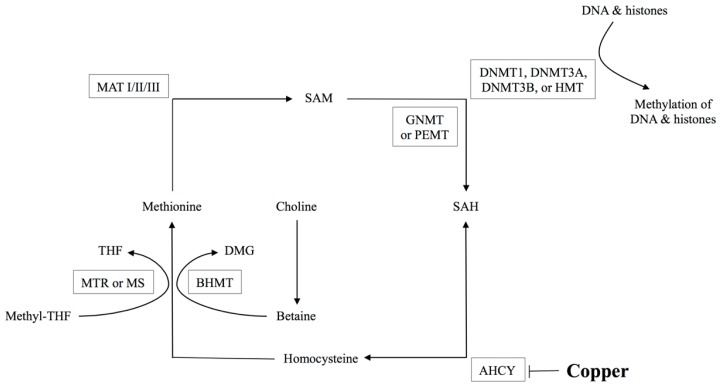Figure 1.
Methionine metabolism. S-adenosylmethionine (SAM) is the principal methyl donor for DNA and histone methylation reactions, whereas S-adenosylhomocysteine (SAH) inhibits all SAM-dependent methylation reactions. S-adenosylhomocysteinase (AHCY) is the bi-directional enzyme that hydrolyzes SAH to generate homocysteine. Methionine synthase (MTR or MS) remethylates homocysteine to form methionine that is in turn converted to SAM via the enzyme methionine adenosyltransferase (isoenzymes MATI/II/III). Homocysteine can also be remethylated to methionine via the betaine homocysteine methyltransferase (BHMT) catalyzed reaction that utilizes betaine. Dimethylglycine (DMG) is a byproduct of the BHMT catalyzed reaction and is also a potent inhibitor of BHMT. Tetrahydrofolate (THF); DNA methyltransferase (DNMT); histone methyltransferase (HMT); glycine N-methyltransferase (GNMT); phosphatidylethanolamine N-methyltransferase (PEMT); DNMTs, GNMT, and PEMT are major consumers of SAM in the liver [14].

